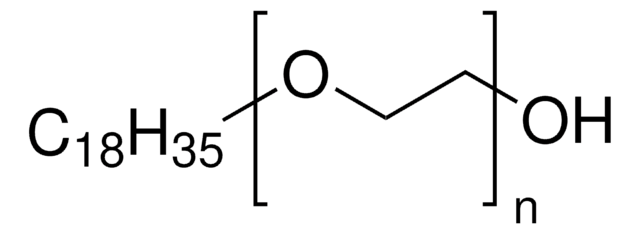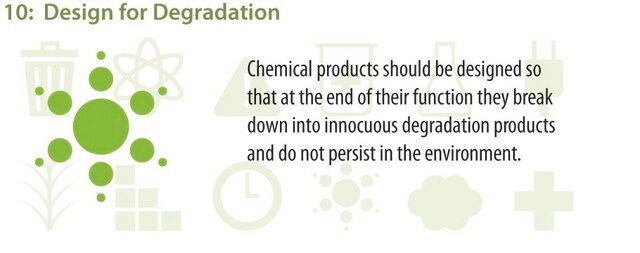STS0212
ECO BRIJ® L4
average Mn ~362
Sinónimos:
Brij® L4, Polyethylene glycol dodecyl ether, Polyoxyethylene (4) lauryl ether
About This Item
Productos recomendados
description
non-ionic
Quality Level
form
semisolid (may be liquid)
mol wt
average Mn ~362
greener alternative product characteristics
Use of Renewable Feedstocks
Design for Degradation
Learn more about the Principles of Green Chemistry.
sustainability
Greener Alternative Product
impurities
≤1.0% water
refractive index
n20/D 1.451 (lit.)
mp
48 °C
acid number
≤2.0 mg KOH/g
hydroxyl value
144‑165 mg KOH/g
solubility
water: insoluble
density
0.95 g/mL at 25 °C (lit.)
HLB
9.7
greener alternative category
SMILES string
CCCCCCCCCCCCOCCOCCOCCOCCO
InChI
1S/C20H42O5/c1-2-3-4-5-6-7-8-9-10-11-13-22-15-17-24-19-20-25-18-16-23-14-12-21/h21H,2-20H2,1H3
InChI key
WPMWEFXCIYCJSA-UHFFFAOYSA-N
¿Está buscando productos similares? Visita Guía de comparación de productos
General description
Features and Benefits
- 100 % Renewable
- 100 % Bio-based
- Certified to the USDA BioPreferred Program
- Lower carbon footprint than petrochemical-based versions
- High-purity chemical suitable for a wide variety of research applications
Physical properties
Other Notes
Legal Information
signalword
Warning
hcodes
Hazard Classifications
Acute Tox. 4 Oral - Aquatic Chronic 2 - Eye Irrit. 2 - Skin Irrit. 2
Storage Class
10 - Combustible liquids
wgk_germany
WGK 2
flash_point_f
Not applicable
flash_point_c
Not applicable
Elija entre una de las versiones más recientes:
Certificados de análisis (COA)
Lo sentimos, en este momento no disponemos de COAs para este producto en línea.
Si necesita más asistencia, póngase en contacto con Atención al cliente
¿Ya tiene este producto?
Encuentre la documentación para los productos que ha comprado recientemente en la Biblioteca de documentos.
Nuestro equipo de científicos tiene experiencia en todas las áreas de investigación: Ciencias de la vida, Ciencia de los materiales, Síntesis química, Cromatografía, Analítica y muchas otras.
Póngase en contacto con el Servicio técnico







